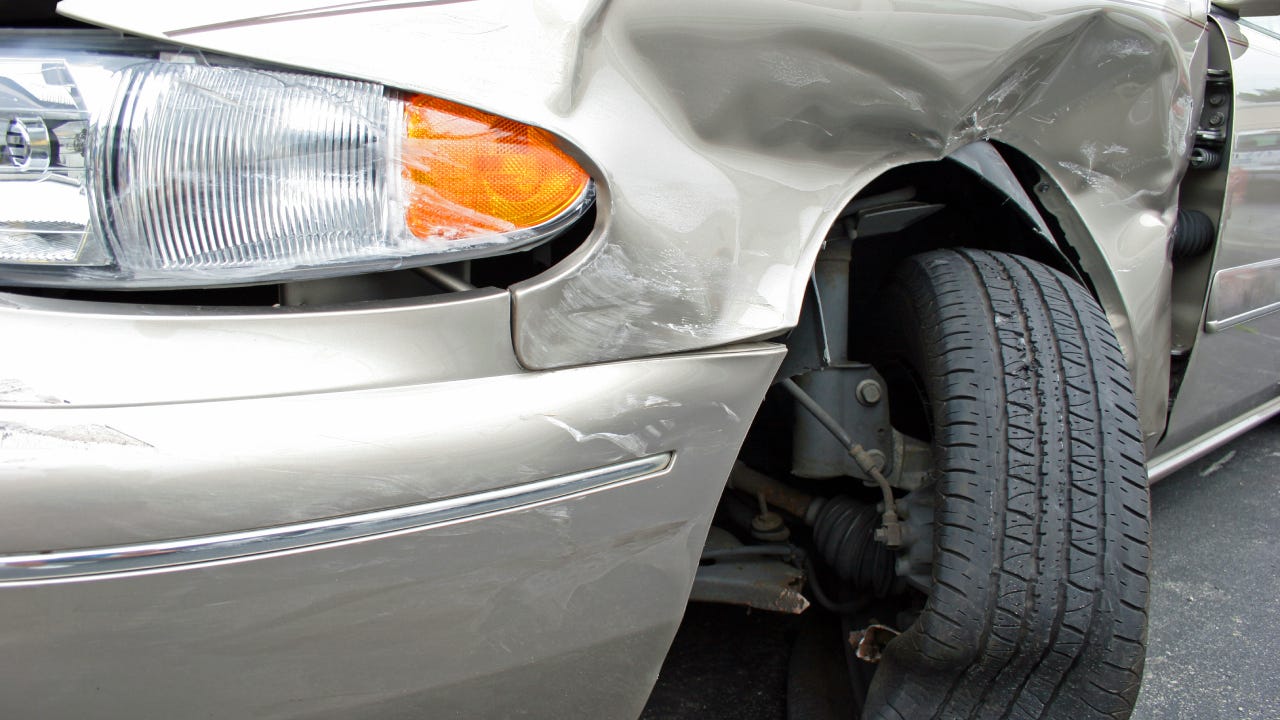What to do after a hit-and-run in Ohio

The Bankrate promise
At Bankrate, we strive to help you make smarter financial decisions. To help readers understand how insurance affects their finances, we have licensed insurance professionals on staff who have spent a combined 47 years in the auto, home and life insurance industries. While we adhere to strict , this post may contain references to products from our partners. Here's an explanation of . Our content is backed by Coverage.com, LLC, a licensed entity (NPN: 19966249). For more information, please see our .
Getting into an auto accident can be a scary experience and a source of physical and emotional pain. This may be especially true if you are involved in a hit-and-run accident. If you find yourself involved in a hit-and-run in Ohio, it’s important to understand the state laws and insurance requirements.
Hit-and-runs in Ohio
A hit-and-run accident involves a driver, typically the at-fault party, fleeing the scene without providing information to the other involved parties. A hit-and-run may occur when a person runs into property or an unattended vehicle, but more serious hit-and-run accidents involve other drivers.
A person may attempt to flee the scene of an accident to avoid responsibility for the crash. They may not have insurance or may not be able to afford to pay for damages. They may also have a history of reckless driving and could risk losing their license if cited for causing an accident.
Victims of hit-and-run accidents are encouraged to call the police and get a record of the incident and document any damage done. Even if the person responsible is never found, this can help to create a record of the incident and avoid insurance penalties.
Ohio hit-and-run laws
Ohio law requires that every driver involved in any accident resulting in some form of damage take these three steps:
- Stop at or nearby the accident scene.
- Exchange the names and addresses, registration numbers, and driver’s license information with other people involved in the accident.
- Contact medical personnel if it is necessary.
Typically, a hit-and-run will be treated as a first-degree misdemeanor per Ohio statutes, which can result in a fine up to $1,000 and jail time up to six months. Penalties escalate as the seriousness increases with the potential for a fifth-degree felony charge if serious personal injury occurred. Prison sentences in this case can range from six to twelve months with a fine up to $2,500. If there was a death, the fleeing driver may spend up to eight years in jail with a $15,000 fine. In all cases, a hit-and-run could result in the driver having their license suspended for six months.
How hit-and-runs impact car insurance rates in Ohio
How a hit-and-run affects your car insurance in Ohio depends on if you were the victim or if you caused the accident. Generally, if you weren’t at fault for the accident and you file a not-at-fault claim on your own insurance, you won’t face a surcharge for the accident. However, you could still see your premium increase; you might lose a claim-free discount, for example. If you’re at-fault and file an insurance claim, you can expect an increase in your premium at your renewal date. Causing any accident can indicate that you are more of a high-risk driver, but breaking the law by leaving the scene can indicate to an insurer that you aren’t as responsible as you could be and may be more likely to cause incidents in the future.
Additionally, at-fault drivers may also need to obtain an SR-22 after a serious traffic violation in Ohio. An SR-22 is a financial responsibility certificate which proves that a high-risk driver has met the Ohio minimum legal requirements for automobile liability insurance. Typically, an SR-22 will need to be maintained for three to five years.
4 things to do after a hit-and-run in Ohio
Understandably, you will likely be shaken and emotional if you are the victim of a hit-and-run accident. However, most law enforcement agencies advise against following the at-fault vehicle as it flees the scene. Rather, it is best to try and settle yourself and take the following steps:
- Contact emergency services: The health of you, your passengers and anyone else involved, like pedestrians, should be your very first priority. If there are injuries, call emergency services (911) for an ambulance. Also call the police. You may want a formal accident report for insurance, and law enforcement’s resources may help to find the driver who fled the scene.
- Collect information and take photographs: Collect as much information as you can about the accident. If possible, take detailed notes about the car and driver, and record a license plate if you can. Also be prepared to describe the event in detail and take photos of the entire accident scene and surrounding area and your vehicle.
- Locate witnesses: If you are able, try and learn if anyone in the area or surrounding homes or other buildings may have witnessed the accident. If they are willing, get their contact information and provide it to the police. The witnesses may be able to provide details about the other vehicle that could help find the at-fault driver.
- Call your insurance company: Although it’s important to attend to emergency services first, as soon as reasonable, contact your auto insurer and follow their guidance on steps to take with a claim. Provide your insurer with all of the information you have gathered.
Will insurance cover a hit-and-run?
Provided that the fleeing driver can be found, you always have the option to file a claim with that driver’s auto insurer, if the driver is insured. Ohio also allows you to file a lawsuit directly against the driver, if necessary.
Of course, you may not be able to locate the driver. There are several ways that your own insurance company in Ohio may cover your personal injury and property damages arising from a hit-and run, depending on what coverages you have in your policy:
- Uninsured and underinsured motorist (UM/UIM) coverage: UM/UIM coverage provides coverage for bodily injury and property damage incurred by you or the passengers in your vehicle from an accident where the other driver is uninsured, underinsured or if they flee the scene and can not be located. Depending on your carrier, if the hit-and-run perpetrator cannot be located, this coverage may not be applicable.
- Medical payments coverage: This coverage provides coverage for medical expenses incurred by you and your passengers, regardless of who is at fault. This coverage is comparable to personal injury protection (PIP) coverage which is not offered in Ohio.
Ohio doesn’t require drivers to carry uninsured motorist coverage, underinsured motorist coverage or medical payments coverage. It could be a good idea, though, to carry these options so you have additional protection on your policy. If you’re not sure if these options are right for you, talk to a licensed agent.
Frequently asked questions
-
-
The best car insurance company won’t be the same for everyone, although our Bankrate review of top providers highlights some of the strengths of major national insurers and regional insurers. It is wise to research a number of these insurers and look for financial strength rankings as well as good reputations for customer service and claim handling. Obtain several quotes and compare to determine which company can best meet your needs at an affordable price.
-
The average annual cost of car insurance in Ohio is $338 for a minimum coverage policy and $1,266 for a full coverage policy. While average rates can be a helpful metric, your price may be higher or lower depending on your specific rating factors, like the type of car you drive, the company you choose and your driving record.
-
It is against the law to drive without insurance in Ohio. Penalties for driving without car insurance can include the suspension of your driving privileges, fines and dealing with mandatory towing costs. You’ll also likely have to pay a reinstatement fee to gain back your driving privileges and show proof of insurance to do so.
-
Related Articles



